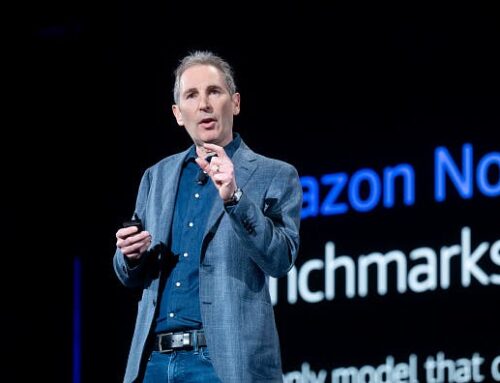J.P. Morgan Private Bank Unveils 2026 Outlook: Investing at the Crossroads of AI, Fragment
November 17, 2025
- AI is cutting costs of expertise and boosting productivity, but it’s also shaking up labor markets and raising the risk of market bubbles.
- The world is splitting into rival blocs and fragile supply chains, making resilience and security the new drivers of investment opportunity.
- Inflation is more volatile and unpredictable, driven by fiscal deficits and supply chain pressures, demanding portfolios built for strength and stability.
NEW YORK, Nov. 17, 2025 /PRNewswire/ — J.P. Morgan Private Bank today released its 2026 Global Investment Outlook, Promise and Pressure, revealing investment insights and opportunities in a world transformed by AI, global fragmentation and inflation risks.
“In 2025, uncertainty defined the market narrative. Today, three major themes set the agenda, reflecting a fundamental shift in how economies operate and requiring a refreshed investment playbook, one that blends discipline with flexibility,” said Grace Peters, Co-Head of Global Investment Strategy at J.P. Morgan Private Bank.
“Looking to 2026, investors face the dual forces of AI-driven productivity and persistent inflation within a fragmented global landscape. Our goal is to help clients find new opportunities and build resilient portfolios aligned with their long-term goals,” said Stephen Parker, Co-Head of Global Investment Strategy at J.P. Morgan Private Bank.
To help investors chart a course through this new frontier, J.P. Morgan Private Bank’s 2026 Global Investment Outlook highlights three defining themes:
The Age of AI: Promise and Paradox
Artificial intelligence is transforming industries, driving productivity and reshaping labor markets, fueling a surge in investment and speculation about a potential AI bubble. In our view, we believe the current AI boom is underpinned by solid fundamentals rather than speculative excess. Ultimately, we believe the greatest risk lies in being underexposed to the sweeping impact of this transformational technology.
“Large U.S. tech companies have tripled their annual capital investment from $150 billion in 2023 to a projected $500 billion or more in 2026, with AI-related investments contributing more to U.S. GDP growth than consumer spending this year,” said Jacob Manoukian, U.S. Head of Investment Strategy. “Despite this impressive momentum, AI investment still accounts for less than 1% of GDP, and one company alone plans to build data centers with over 25 gigawatts of capacity—representing well over $1 trillion in capital expenditures in the coming years.”
“The next wave of AI value creation, spanning agentic AI systems, vertical industry applications and AI-enabled horizontal software, is still in its formative stages and largely unfolding within private markets,” added Sitara Sundar, Global Head of Alternative Investment Strategy. “To capture the potential of the AI revolution and manage the risks of overexuberance, investors must navigate private markets with care, prioritizing manager selection and access in a sector that is rapidly becoming more competitive.”
Fragmentation: The New Force in Global Investment
As globalization recedes, fragmentation is driving North America, Europe, Asia and Latin America to redefine their roles and opportunities in a world shaped by regional interests. With new blocs emerging and shifts in security, trade and currency dynamics, investors must navigate a landscape where resilience and strategic diversification are more important than ever.
“Europe’s answer to this new era is decisive, marked by ambitious German fiscal stimulus and increased European defense spending, which should boost growth prospects in the region,” said Erik Wytenus, Europe, Middle East and Africa Head of Investment Strategy. “Notably, Europe’s private markets present a vast opportunity set that is often overlooked by global investors, as a remarkable 97% of European companies with €100 million or more in revenue are private.”
Nur Cristiani, Latin America Head of Investment Strategy, shared, “Latin America is an indispensable force in global supply chains and the energy transition, fueling the future of industry and AI. South America commands a 40% share of global copper production and holds 38% of the world’s copper reserves, alongside well-established manufacturing and logistical infrastructure. With central banks nearing the end of their easing cycles, the outlook for currencies and growth is encouraging, both short-term and long-term.”
“China’s expanding trade surplus and stronger ties with Southeast Asia highlight its global influence,” added Grace Peters, Co-Head of Global Investment Strategy at J.P. Morgan Private Bank. “While the impact on emerging markets varies, we see standout opportunities across Asia — most notably in India and in Taiwan’s technology and export sectors, driven by their independent growth. Within China, tech innovation in AI, consumer platforms and electric vehicles is fueling impressive returns and shaping a dynamic digital economy.” Peters concluded, “For investors, the region offers evolving opportunities defined by efficiency, innovation and competitiveness.”
Beyond Bonds: Navigating Inflation’s Structural Shift
The sharp rise in inflation since 2022, coupled with increased government deficits, has redefined the investment landscape, replacing stability with ongoing price pressures and heightened uncertainty. Today, inflation’s gradual yet significant impact is a central consideration for long-term portfolio performance, as investors must navigate a new inflationary regime shaped by structural drivers such as capacity gaps, robust consumer balance sheets, supply chain resilience and fiscal activism.
“Bonds are still essential to portfolio construction, but investors need to look beyond traditional fixed income to address persistent inflation and increased rate volatility,” said Stephen Parker, Co-Head of Global Investment Strategy at J.P. Morgan Private Bank. “To navigate this new regime, complementing core bonds with commodities, real assets and uncorrelated hedge funds provides diversification for equity exposure amid persistent inflation.”
About J.P. Morgan Private Bank
J.P. Morgan Private Bank provides customized financial advice to help wealthy clients and their families achieve their goals through an elevated experience. Clients of the Private Bank work with dedicated teams of specialists that bring their investments and financial assets together into one comprehensive strategy, leveraging the global resources of J.P. Morgan across planning, investing, lending, banking, philanthropy, family office management, fiduciary services, special advisory services and more. The Private Bank oversees more than $3.4 trillion in client assets globally (as of 9/30/2025). More information about J.P. Morgan Private Bank is available at privatebank.jpmorgan.com.
Disclaimers
This material is intended as a general market commentary, and not a guarantee of future results or investment advice. Any views, estimates and strategies expressed are based on current market conditions and are subject to change without notice. Outlooks and past performance are not guarantees of future results.
SOURCE J.P. Morgan Private Bank

Search
RECENT PRESS RELEASES
Related Post




